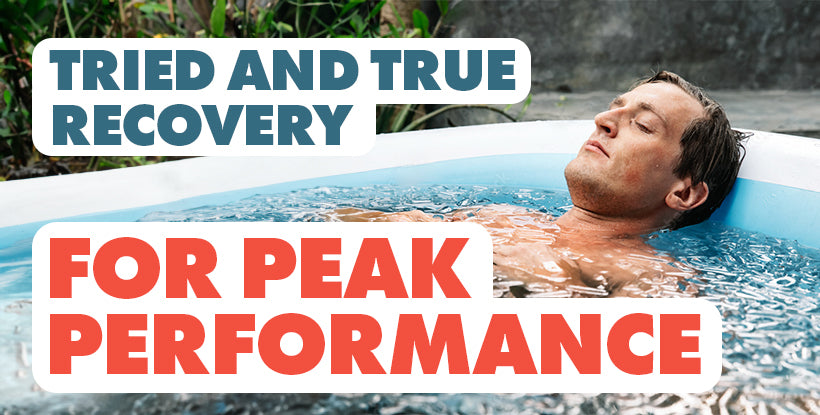Navigating the path to peak performance and gains in the gym is not only about the hard training sessions but also the essential aspect of recovery. Although it is often overlooked and even completely ignored by some, understanding how to let your body recuperate after a workout can make all the difference and lead to some of your best gains.
If you've been sidelining proper recovery, it's time to reconsider its role. It's the silent partner of strength and endurance success—the yin to the yang of intense training.
While the internet is flooded with unique ways to optimize recovery, we will keep things simple here. Let's examine five tried and true recovery methods, in no particular order, to help you achieve your best in the gym.
1. Active Recovery
Active Recovery, as simple as it sounds, is profoundly impactful. Engaging in low-intensity activities on rest days, like walking or light cycling, is not just about keeping the body in motion. Research reveals that these activities significantly aid in removing lactate from the blood following intense workouts, which is crucial in reducing muscle fatigue and soreness. It’s about giving your muscles a gentle nudge to recover, ensuring they receive the nutrients needed for repair, all while effectively clearing out the by-products of intense training.
2. Ice Baths
Ice baths, the chilly plunge that has gained a lot of steam in the fitness world, is more than just a trend. Submerging yourself in cold water can be a shock to the system, but it's a shock that comes with benefits. The cold exposure helps reduce inflammation and muscle soreness, almost like hitting a reset button on your body’s fatigue levels. It’s not just a physical recovery tool but also a mental fortitude builder. As you sit in the cold, embracing the discomfort, you train your mind to be as resilient as your body.
3. Adequate Sleep
Sleep is a cornerstone of recovery. During those precious hours of shut-eye, your body undertakes most of its healing and repair work. Growth hormone, essential for muscle repair and growth, is primarily secreted during deep sleep, making quality sleep necessary for anyone aiming for better gains.
But did you know about 1 in 3 adults in the United States report not getting enough sleep? Inadequate sleep can lead to decreased reaction times, reduced endurance, and a higher risk of injuries. So, if you aren’t progressing in the gym like you’d hoped, consider making deep sleep more of a priority.
4. Stretching
Stretching is an age-old recovery method that still holds significant importance. Post-exercise stretching helps improve flexibility, reduce muscle tension, and enhance blood circulation to the muscles. It’s not just about elongating the muscles but also about promoting a range of motion, which is vital for muscle health and joint function. Incorporating stretching into your recovery routine can also be a calming and stress-relieving practice, aiding in mental recovery as well as physical.
5. Self-Myofascial Release - Foam Rolling
Myofascial release focuses on the fascia, the connective tissue surrounding muscles. Foam rolling acts on these fasciae to release tension and knots. When muscles are overused or injured, the fascia can become tight and form trigger points or knots. Foam rolling helps in breaking down these knots, restoring normal muscle and fascial function. This method also can help improve blood flow, essential for transporting nutrients to the muscles for repair and growth.
Start Now
Peak performance in the gym starts with how you rest and recover. Begin today, and your future self will thank you. Every step towards effective recovery is a step towards your personal best.

